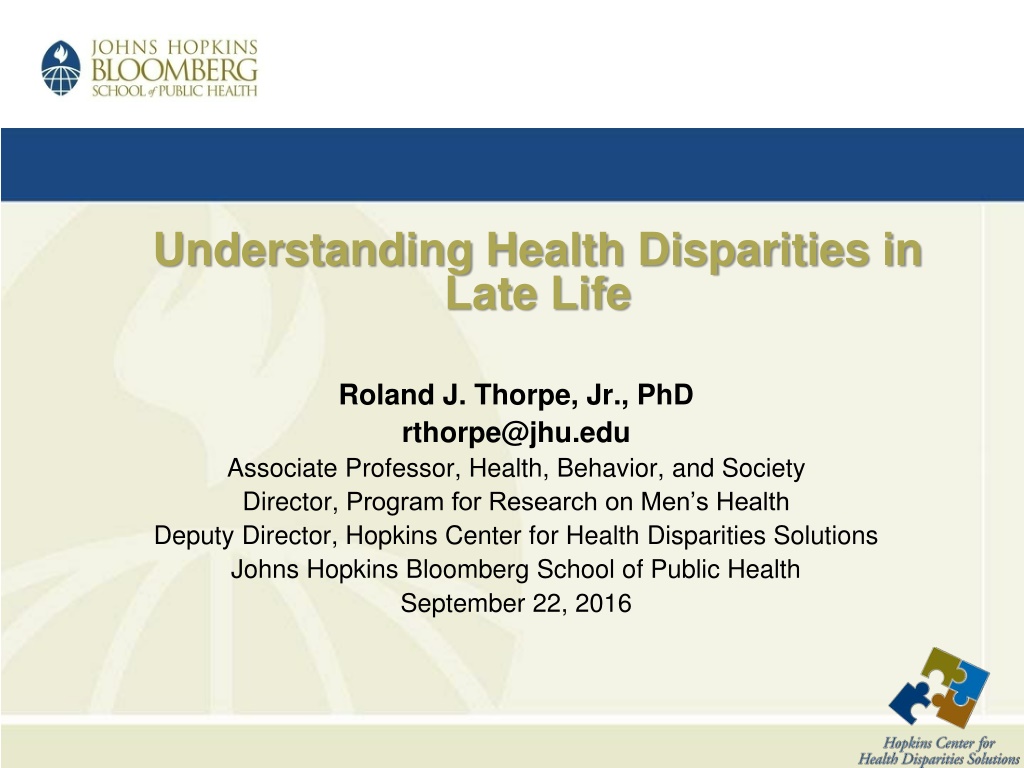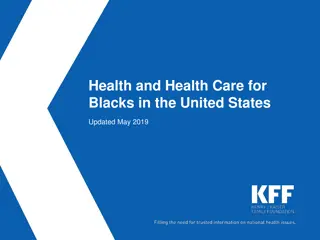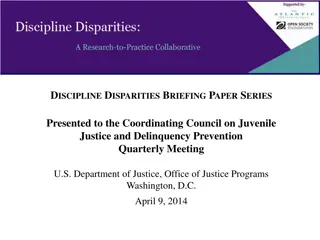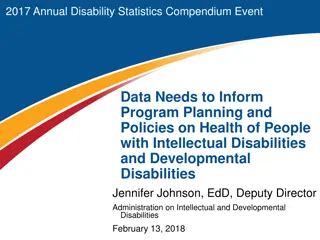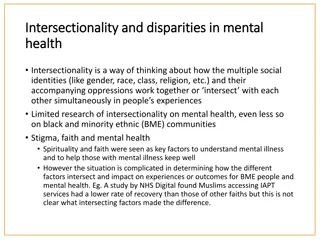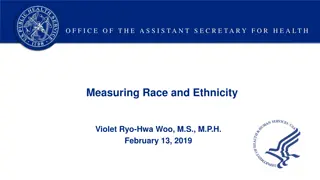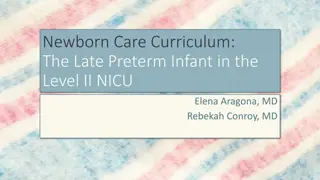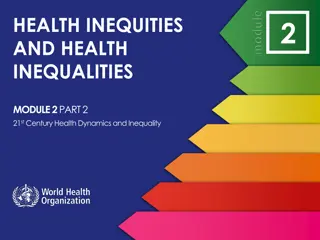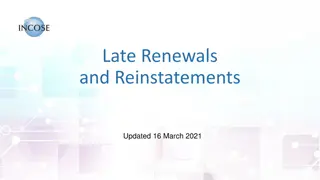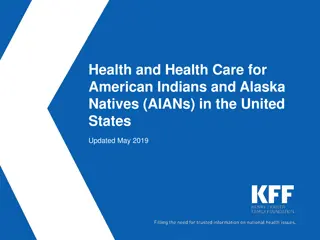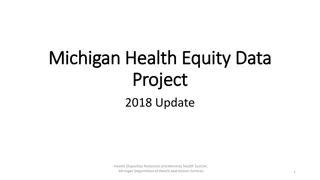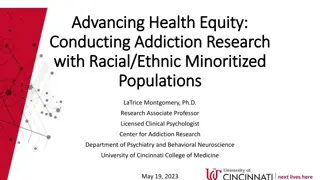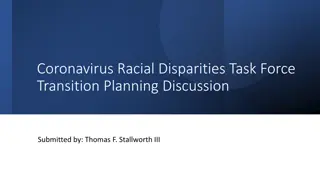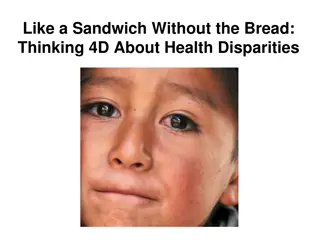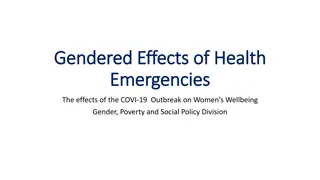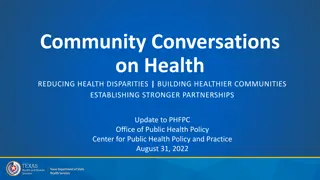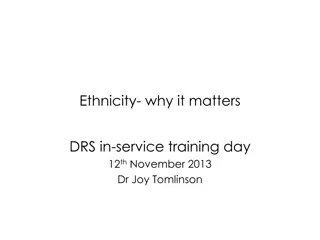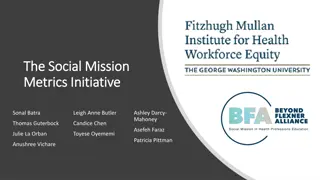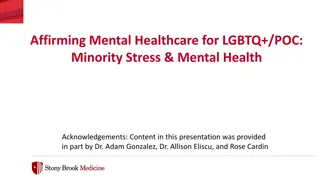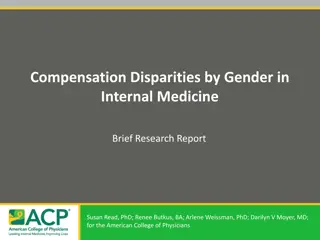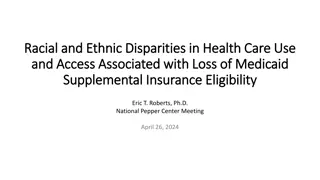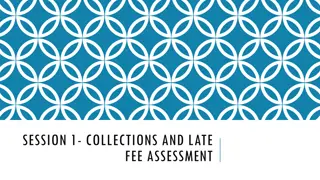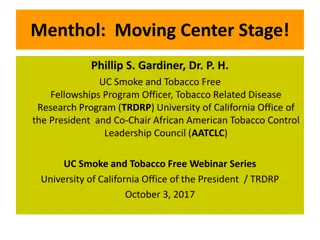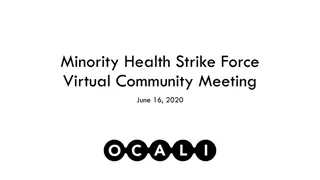Understanding Health Disparities in Late Life by Roland J. Thorpe, Jr., PhD
The presentation by Roland J. Thorpe, Jr., PhD focuses on health disparities in late life, highlighting projections of the resident population by race/ethnicity, the expected increase in the older U.S. population from 1990 to 2050, and percentages of males and females aged 65 and over with disabilities or mobility difficulties. The data reveal significant disparities based on race and ethnicity that impact the health and well-being of older adults. Understanding and addressing these disparities is crucial for promoting health equality among aging populations.
Download Presentation

Please find below an Image/Link to download the presentation.
The content on the website is provided AS IS for your information and personal use only. It may not be sold, licensed, or shared on other websites without obtaining consent from the author. Download presentation by click this link. If you encounter any issues during the download, it is possible that the publisher has removed the file from their server.
E N D
Presentation Transcript
Understanding Health Disparities in Late Life Roland J. Thorpe, Jr., PhD rthorpe@jhu.edu Associate Professor, Health, Behavior, and Society Director, Program for Research on Men s Health Deputy Director, Hopkins Center for Health Disparities Solutions Johns Hopkins Bloomberg School of Public Health September 22, 2016
Projected Percentage Resident Population by race/ethnicity, U.S. 2010- 2070 Source: U.S. Bureau of the Census:(NP-T5) Projections of the Resident Population by Race, Hispanic Origin, and Nativity: Middle Series, 1999 to 2100 Exploration and Intervention for Health Equality
Expected Increase in U.S. Older Population 1990 2050 U.S. Bureau of Census middle series projections, Jan. 2000 Exploration and Intervention for Health Equality
Percent age 65+ by race and Hispanic origin, 2008 and 2050 100 90 80 80 70 2008 2050 (projected) 59 60 Percent 50 40 30 20 20 12 9 9 7 10 3 3 1 0 Non-Hispanic white alone Black alone Asian alone All other races alone or in combination Hispanic (of any race) Reference population: These data refer to the resident population. SOURCE: U.S. Census Bureau, Population Estimates and Projections. 2008. Exploration and Intervention for Health Equality
Percent of Males 65 and Over (age- adjusted) with Disability or Mobility Difficulty, 2008 50.0 44.2 45.0 40.8 40.0 34.4 35.0 30.0 Percent 25.0 20.0 14.4 15.0 10.0 8.1 10.0 7.6 5.3 4.6 5.0 0.0 ADL disability IADL disability Non-Hispanic Black Mobility difficulties Hispanic Non-Hispanic White Data Source: National Health Interview Survey Exploration and Intervention for Health Equality
Percent of Females 65 and Over (age- adjusted) with Disability or Mobility Difficulty, 2008 70 65.4 60 55.4 50.2 50 Percent 40 30 20.2 19.5 20 16.9 9.9 9.9 7.9 10 0 ADL disabilty IADL disability Mobility difficulties Non-Hispanic White Non-Hispanic Black Hispanic Data Source: National Health Interview Survey Exploration and Intervention for Health Equality
WHY? Exploration and Intervention for Health Equality
Health Disparities Research Related to Health Disparities Research Related to Aging Aging Source: Hill CV, Perez-Stable E, Anderson N, Bernard M. 2015. The National Institute on Aging Health Disparities Research Framework. Ethnicity & Disease, 25(3):245-254. Exploration and Intervention for Health Equality
We Need Community-Based Solutions Schools Family Housing Crime Employment Supermarket Parks and recreation Pollutions and Environmental Toxins Neighborhood We need to think about factors outside the box. There are other factors that influence health and healthcare outcomes besides medical care. Exploration and Intervention for Health Equality
Understanding Health Disparities in Late Life Roland J. Thorpe, Jr., PhD rthorpe@jhu.edu Associate Professor, Health, Behavior, and Society Director, Program for Research on Men s Health Deputy Director, Hopkins Center for Health Disparities Solutions Johns Hopkins Bloomberg School of Public Health September 22, 2016
Social Determinants of Health Exploration and Intervention for Health Equality
